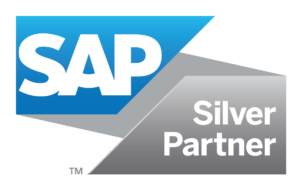For a wide variety of reasons, B2B transactions are more difficult and time consuming to process compared to those in the B2C sector. Simply put, consumers only need to interact with a company once in a straightforward manner, while corporate customers often find themselves working with a collection of employees, documents and departments.
On one hand, problems always have solutions, so solving the B2B transaction puzzle should be relatively easy if businesses have the right tools. Unfortunately, the other side of the situation is veiled in confusion, as many enterprises lack the budgets or drive to implement innovative software and systems that simplify B2B payments. The bottom line is that the industry is stuck writing checks and using paper documents instead of embracing the modern times and digitizing every step of the supply chain, from procurement to payment processing.
“More than 60 percent of payments between businesses will be made with a check.”
The facts
According to PYMNTS.com, around 50 percent of organizations still use checks for B2B payments, while Drew Hofler, director of solutions marketing for SAP Cloud & Network Solutions, told IT Business Edge that more than 60 percent of payments between businesses will be made with a check. That’s not the only part of these transactions that isn’t electronic.
“As any business owner or CFO will attest, making the payment is only a small part of the overall process,” René Lacerte, CEO and founder of Bill.com, explained to PYMNTS.com. “The paper-intensive, manual process that occurs before and after the payment is made is time consuming, error-prone and expensive. Business payments require more document management, systems integration with accounting software, and collaboration with employees, vendors, customers and accountants.”
When considering all of the factors that go into B2B payment, Lacerte asserted that 80 percent of businesses have a manual process tucked away with their payment management methods. Not enough organizations are focusing on digitizing their procurements and purchasing despite the risks and inefficiencies of paper-based transactional techniques. According to IDC, e-invoicing is the last priority of manufacturers in a list of 18 supply chain processes.
The push
However, sooner rather than later, businesses can expect to retire their checkbooks. Some factors are pushing B2B transactions into the digital space, such as both private and public organizations, making it difficult to determine exactly when B2B payment processes will completely rely on technology.
Government programs and policies are certainly a useful method for pushing the adoption of e-invoicing and B2B electronic payment processes. PYMNTS.com reported that Chile mandated e-invoicing, specifically, in 2014, estimating that it would save the country $600 million annually and help reduce tax fraud. On North American soil, the U.S. Department of the Treasury implemented an e-invoicing requirement in 2011, resulting in a savings of $450 million every year. Governments could simply invoke similar legislation in an attempt to encourage B2B electronic payment processes, citing a reduction of fraud and spending as key factors.
 Writing checks just as time-consuming as it is an error-prone process.
Writing checks just as time-consuming as it is an error-prone process.In regard to private sector influences on B2B check-based transactions, Hofler told IT Business Edge that business networks could be integral to the future of B2B payments. He explained that enterprises could join networks that function similar to the way that Amazon connects customers with merchants. Instead of having each supplier worry about transactions, one group would manage a B2B payment ecosystem, Hofler indicated. Going digital doesn’t mean everyone needs to implement new software and hardware, but rather this transitional time can be leveraged to develop completely new B2B payment systems and methods.
The most important factors
However, despite the push for electronic B2B transactions by the government and business networks, enterprises aren’t going to forget about paper unless new technologies support payment processing and tasks associated with e-invoicing and supply procurement. After all, public agencies won’t force regulations that cannot possibly be supported, and in order for Amazon-eque business networks to form, a platform is required.
Lacerte explained to PYMNTS.com that the cloud is one technology streamlining electronic B2B transactions. Thanks to real-time collaboration capabilities and a simpler way to share information and documents, businesses can make procurement more transparent and easy to manage. Still, the cloud-based solutions will just be for show unless they integrate with existing or cutting-edge hardware. Simply put, many enterprises will not upgrade their entire IT ecosystems to implement new payment processing software and tools. Digital solutions will need to seamlessly become a part of B2B transactions or businesses will risk having those programs go unused.
For example, SAP is a popular platform in the data centers of businesses across industries because it integrates with everything from enterprise resource planning software to analytics tools to customer management suites. It is important that B2B payment processing technologies work with those existing tools, as operational efficiencies directly impact the bottom line.
“In order to prepare for the IoT, enterprises will need to start digitizing their B2B processes now.”
Preparing for the future
Another factor driving the digitization of B2B payment processing is the Internet of Things. In the near future, manufacturers and suppliers will have all of their equipment, machinery, transportation, goods and other devices connected to one another in a machine-to-machine network. The data from the IoT will improve production and inventory tracking, but when layering that information and integrating it with payment data, businesses will achieve a level of visibility and management unmatched in the modern day. However, in order to prepare for this future, manufacturers and suppliers will need to start digitizing their B2B processes now.
Of course, the last but perhaps most important requirement for a B2B electronic payments future lies in cybersecurity. It should come as no surprise that cybercriminals are going to follow the money, and the better that data protection gets, the more advanced threats become. Attacks will continue to happen regularly, with no end in sight. To protect the corporate data of clients, B2B suppliers will need cutting-edge cybersecurity solutions that offer simplicity and control. Until those systems are in place, wholly relying on electronic B2B transactional methods will be dangerous and potentially illegal in an era when the government is becoming more involved in setting data protection standards. Cybersecurity is no longer optional.
B2B payments have a long road ahead of their improvement. It’s not an impossible end goal to reach, but it will be critical to start the journey sooner rather than later.
[horizontal_line]
Does Your Business Need Help Accepting B2B Electronic Payments?
[spacer_div_10]
[button_link]We Can Help[/button_link]


